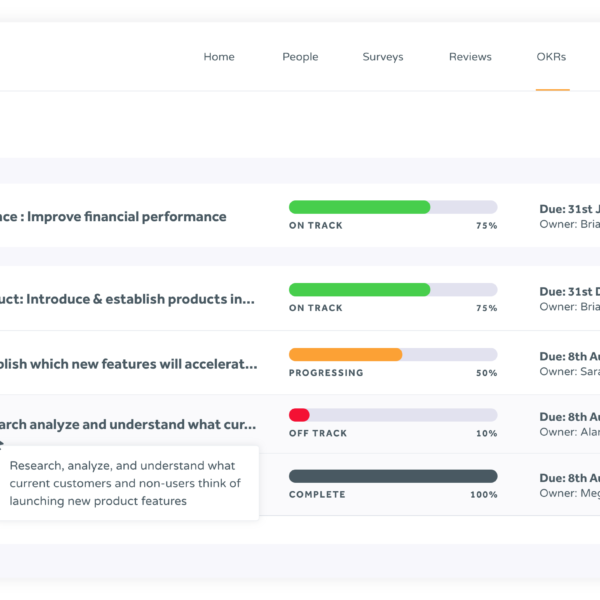Performance management is a critical component of any successful organisation. It involves setting clear expectations, providing regular feedback, and implementing a system for recognizing and rewarding outstanding performance. In the year 2024, it’s more important than ever to improve performance management within your organisation. With the right strategies and tools, you can boost efficiency, enhance productivity, and maximize your team’s potential for success.
In this article, we’ll explore the top 4 steps you can take to improve performance management in your organisation in 2024. From assessing your current system to providing regular feedback and implementing reward systems, these strategies will help you take your performance management to the next level.
Key Takeaways:
- Improving performance management can boost productivity and efficiency in your organisation.
- Assess your current performance management system to identify any gaps or areas for improvement.
- Set clear performance goals and expectations using SMART criteria.
- Provide regular feedback and coaching to help employees enhance their skills and overcome performance challenges.
- Implement a performance recognition and reward system to incentivize and motivate employees.
Assess Your Current Performance Management System
Before making any improvements, it’s crucial to assess your current performance management system. Begin by evaluating its effectiveness and identify gaps or areas of improvement within the system. To gain more clarity, gather feedback from employees and consider their opinions.
By doing so, you can have a baseline for implementing changes that can address the specific needs of your organisation and, therefore, be more impactful. Additionally, examining your current system helps you recognize what is and isn’t working, saving time, resources, and effort when implementing changes.
Remember that no system is perfect, and your specific needs might influence what you want in your performance management system. The objective of this step is to provide a robust foundation to build on while acknowledging the current weaknesses within the system.
Examples
| Question | Rating (out of 10) | Feedback |
|---|---|---|
| How well does your current performance management system align with overall business objectives? | 6 | The system aligns well with specific objectives, but there is a need for improvement to ensure better integration with overall business goals. |
| How often do employees receive feedback on their performance? | 4 | Feedback is generally infrequent and ineffective. |
“Evaluating your current performance management system can help identify areas that may have gone unnoticed and pinpoint issues before they escalate into more significant problems.”
Set Clear Performance Goals and Expectations
One of the essential aspects of performance management is setting clear and measurable goals. When employees understand their role, responsibilities, and targets, they can work towards them with a clear direction. It ultimately improves performance and boosts productivity.
Creating SMART goals that are Specific, Measurable, Achievable, Relevant, and Time-bound ensure that they are achievable and measurable, reducing ambiguity. Instead of relying on vague goals that employees may interpret differently, provide specific and well-defined objectives to ensure that everyone is on the same page.
Moreover, ensure that employees have clear expectations set out for their performance. This includes what is expected of them, how they will be evaluated, and what they need to achieve. By providing transparency and clarity, employees can focus their efforts on the tasks that need to be accomplished. Discuss mutual expectations in regular performance reviews to ensure everyone is aligned.
To create an environment of trust and accountability, involve employees in the goal-setting process. Additionally, communicate and track progress regularly, celebrating successes and addressing challenges as they arise. This promotes a culture of continuous growth and improvement.
Check out this WeThrive client case study with +50% more development requests – view case study.
Provide Regular Feedback and Coaching
Regular feedback and coaching are essential components of performance management. By implementing a system that encourages ongoing feedback between managers and employees, organisations can identify areas for improvement and provide constructive criticism and praise where necessary. Investing in coaching and development programs can also help employees enhance their skills and overcome any performance challenges they may face.
As part of the feedback process, it’s important to set clear performance goals and expectations, track progress regularly and provide necessary support and guidance. This creates a sense of accountability and helps employees stay aligned with organisational objectives. Additionally, coaching can be used to develop new skills, improve communication and strengthen relationships between team members.
Incorporating regular feedback and coaching into performance management systems can lead to a more engaged and motivated workforce. This can lead to increased job satisfaction, better employee retention rates, and improved productivity. Ultimately, by providing employees with the support and resources they need to succeed, organisations can benefit from stronger team performance and better results.
Implement a Performance Recognition and Reward System
Employee recognition and appreciation is an important part of any organisation, as it helps create a positive work environment and encourages employees to continually strive for excellence. Recognition, in the form of rewards or incentive programs, can be a significant motivator to improve performance.
Implementing a reward system does not have to be complicated. Simple methods like awarding certificates, gift vouchers, or shout-outs on social media, are effective in acknowledging excellent work. Incentive programs can also include promotions, profit-sharing, merit-based pay increases, and performance bonuses.
Performance recognition and reward systems should be transparent, fair, and consistently applied across the board. Be sure to set clear performance standards and be proactive in tracking progress, so that recognition is given appropriately.
Public recognition of high-achievers is an easy way to motivate other employees to reach the same heights. Celebrate employee achievements in meetings, newsletters, or through other internal communications. This will spur friendly competition amongst staff members and drive excellence.
Be creative in recognizing great work, and ensure that rewards are aligned with both the employee’s performance and the style of the organisation. With an effective reward system in place, employees will feel valued, motivated, and continually strive to improve.
Conclusion
Improving performance management is an ongoing process that requires continuous effort and adaptation. By following these top 5 steps in 2024, you can enhance performance management in your UK organisation, boost efficiency, and drive better results. Remember that performance management is not a one-size-fits-all approach, so tailor these steps to suit the unique needs of your organisation.
Regularly reviewing your current performance management system, setting clear performance goals and expectations, providing regular feedback and coaching, and implementing a performance recognition and reward system are all crucial steps to improving overall performance.
Keep in mind that effective performance management can lead to better employee engagement, job satisfaction, and retention. So, whether you’re a small business owner or part of a larger organisation, investing in performance management can have a significant impact on your bottom line.
Take the time to implement these steps, track progress, and make adjustments where necessary. With time, effort, and dedication, you can improve performance management, boost efficiency, and achieve your organisation’s goals.
Thank you for reading!
FAQ
How can I improve performance management in my organisation in 2024?
To improve performance management in your organisation in 2024, you can follow these top 5 steps:
What should I do first to improve performance management?
The first step to improving performance management is to assess your current performance management system. Evaluate its effectiveness, identify any gaps or areas of improvement, and gather feedback from employees.
Why is setting clear performance goals important?
Setting clear performance goals is crucial because it ensures that each employee understands their role, responsibilities, and targets. Creating SMART goals that are Specific, Measurable, Achievable, Relevant, and Time-bound provides employees with a clear direction to work towards.
How can feedback and coaching help improve performance?
Regular feedback and coaching play a vital role in performance management. Implement a system that encourages regular feedback between managers and employees. Provide constructive criticism and praise where appropriate. Additionally, invest in coaching and development programs to help employees enhance their skills and overcome any performance challenges they may face.
Is performance management a one-size-fits-all approach?
No, performance management is not a one-size-fits-all approach. It requires ongoing effort and adaptation to suit the unique needs of each organisation. Tailor the steps provided to fit your organisation’s specific requirements.


